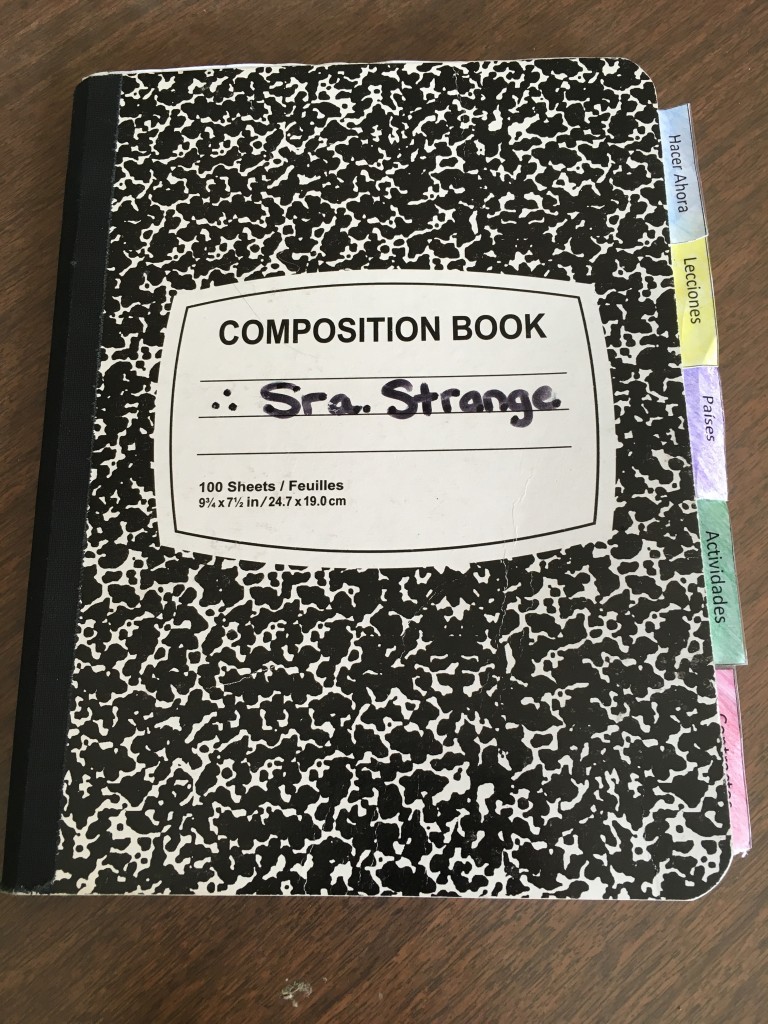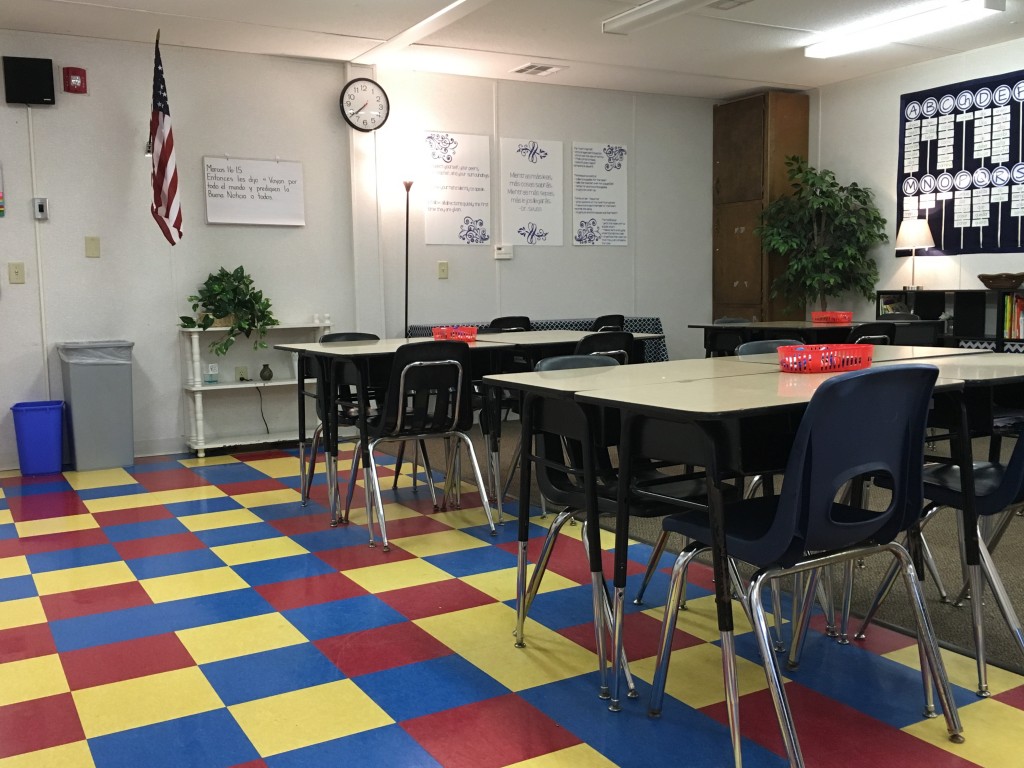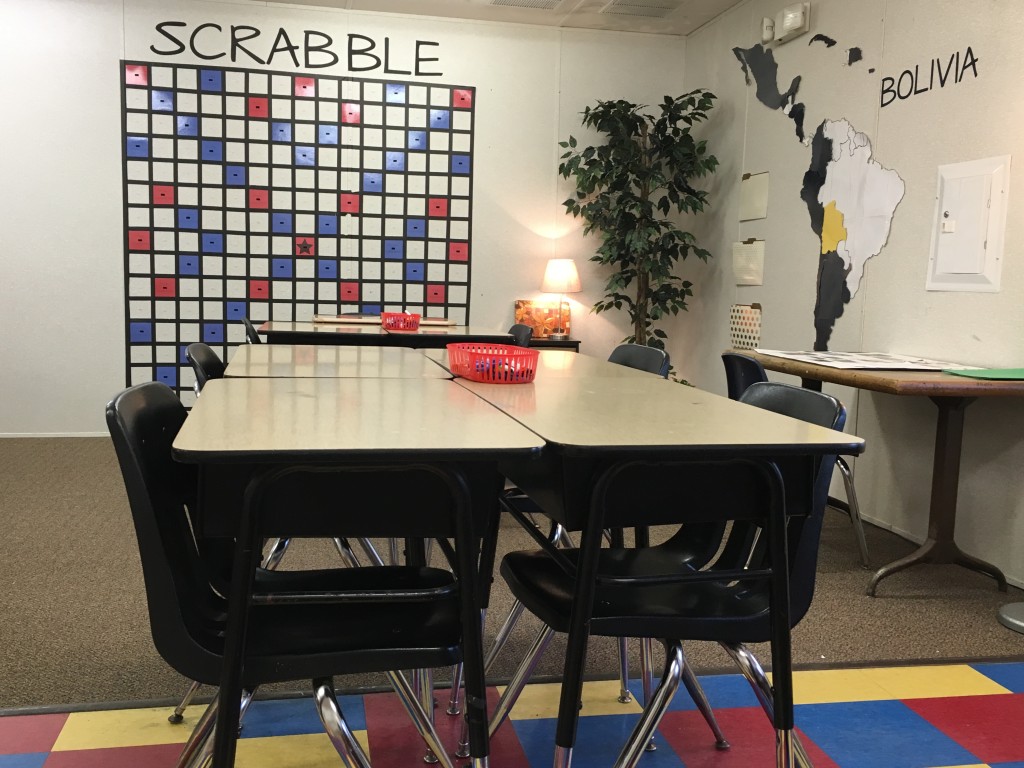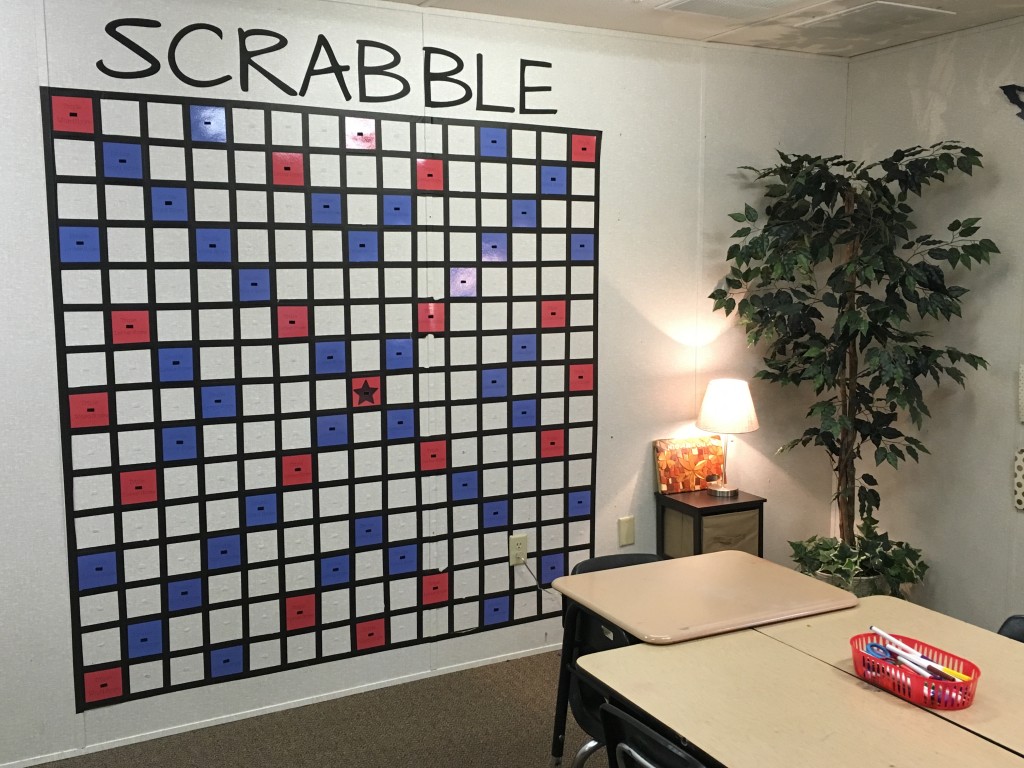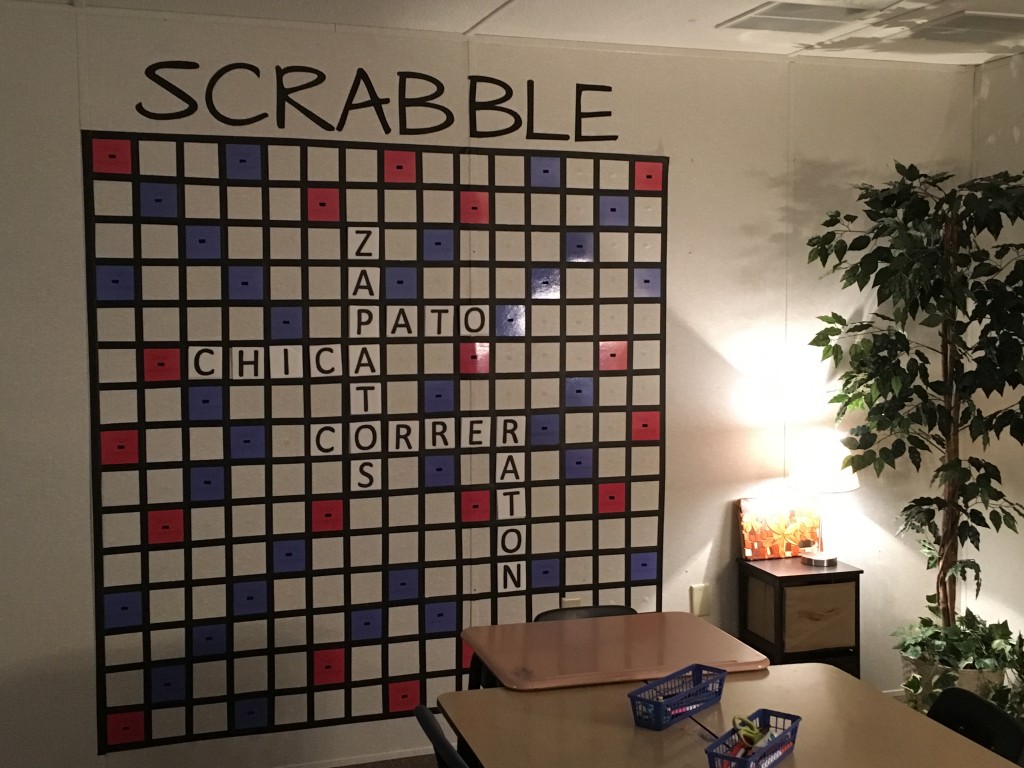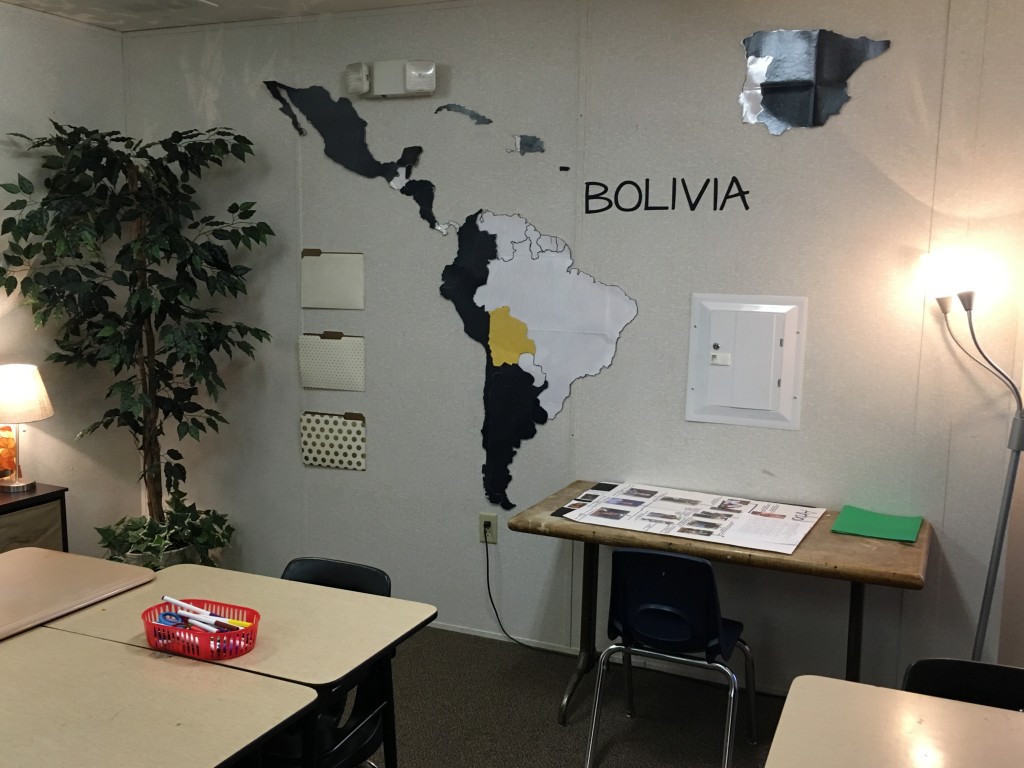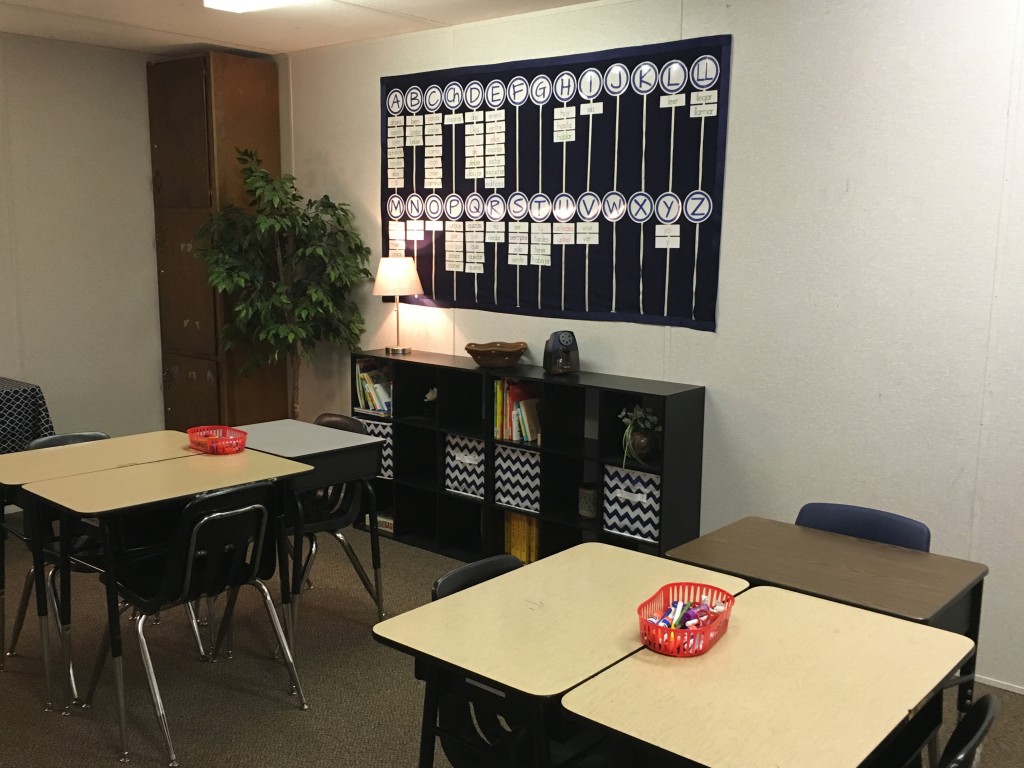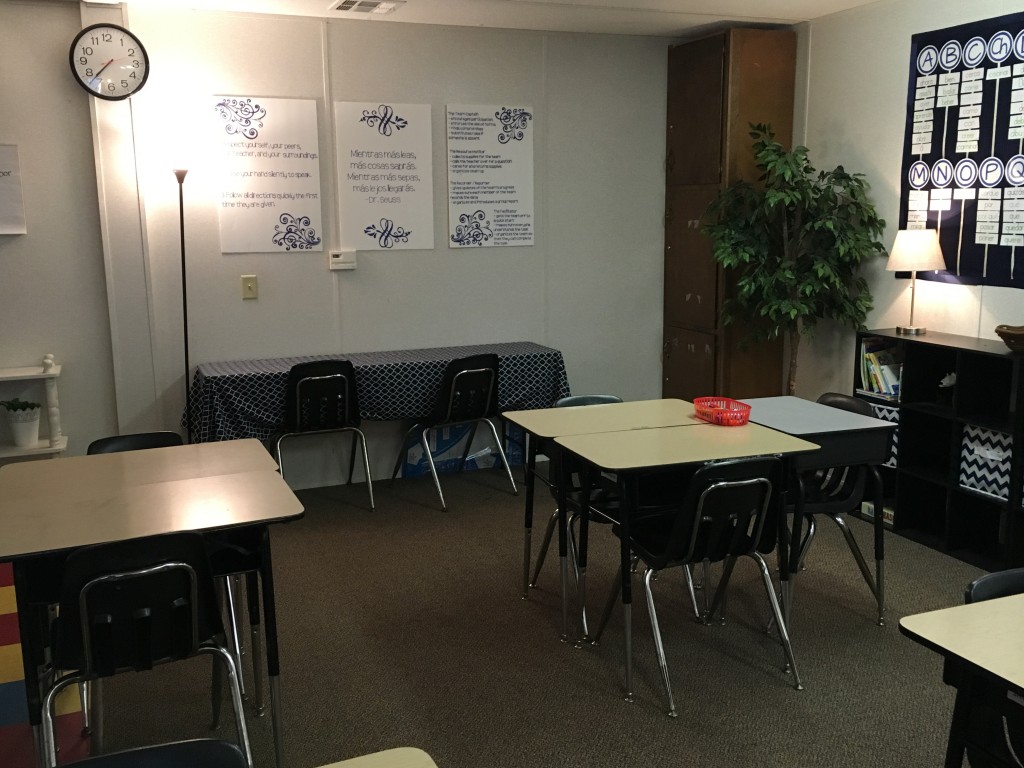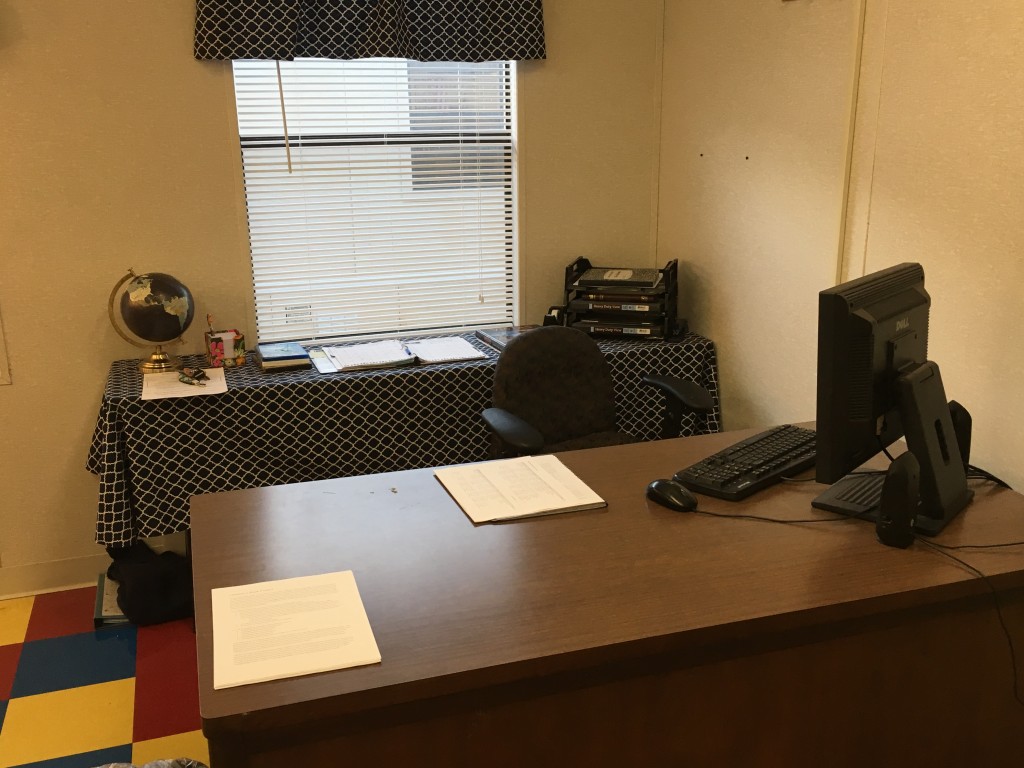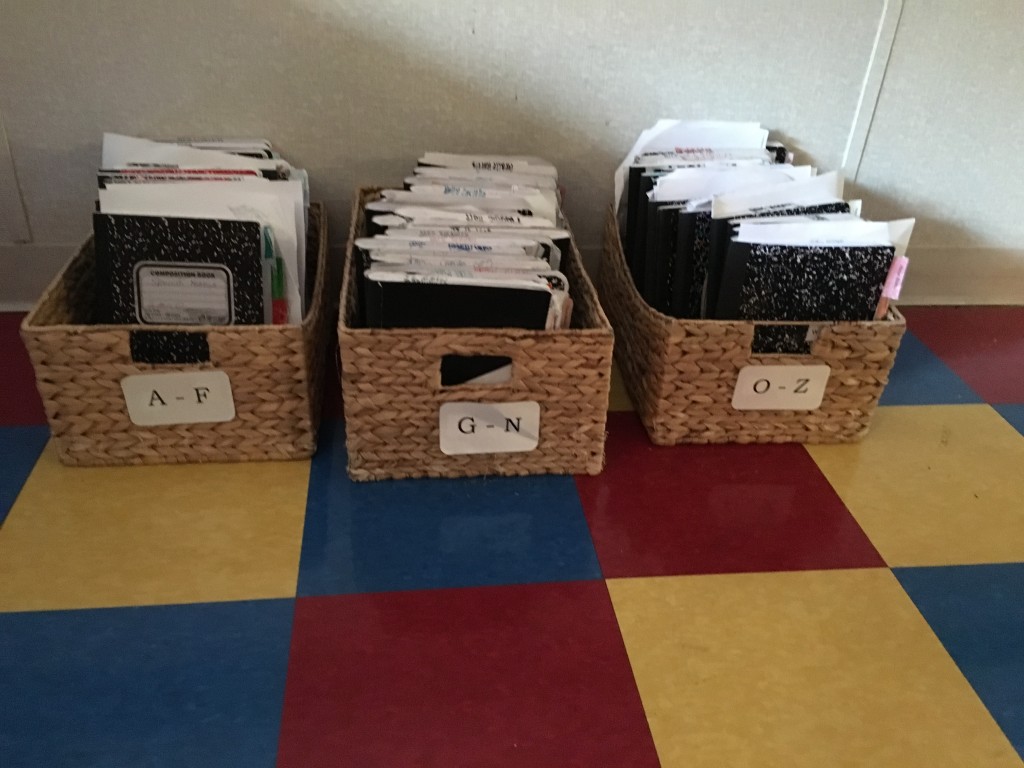So if you read the previous post you know that I have been using Interactive Journals in my middle school Spanish classroom this year and have absolutely loved the experience! I am excited to get to share it with you now and hear from any of you who have also had experiences with these journals in your classrooms. In the previous post I detailed how I had my students set them up so that they would be ready to go. I divided up the notebook into six sections by giving the students tabs for easy access. These sections were: Hacer Ahora (Do Now), Lecciones (Lessons), Paises (Countries), Actividades (Activities), Contractos (Contracts), and Vocabulario (Vocabulary).

Hacer Ahora is where students record the answers for their morning activity that is on the SmartBoard when they arrive to class each day. These activities take no more than five minutes and are very useful for getting students on task and ready to learn. I also ensure that the questions I put up there help to review concepts we have recently studied. This is a good quick assessment to see who gets it and gets working on it quickly and who is falling behind (those who stare at the board blankly). I also have students record their Minuto Loco in this section. The Minuto Loco is an idea that I cannot take credit for but I do not remember where I first heard it. It is similar to a speed drill. For Spanish 1, I have noticed that many students struggle getting used to the idea of conjugating verbs. Once we have covered this section in our notes, we begin doing Un Minuto Loco each day at the beginning of class. I give students one minute and I reveal a verb that they must conjugate. Toward the end of the first semester I give them two. Students are always allowed to use their verb chart for the Minuto Loco but I find that since we do it every day it doesn’t take long for them to unintentionally memorize all of the endings and I never had to force them to do it!
Lecciones is where students record their lesson notes. I occasionally include print outs for them to glue into this section, particularly for detailed charts or other helpful aids that would take way too long to have them transcribe. Other times they just write notes.
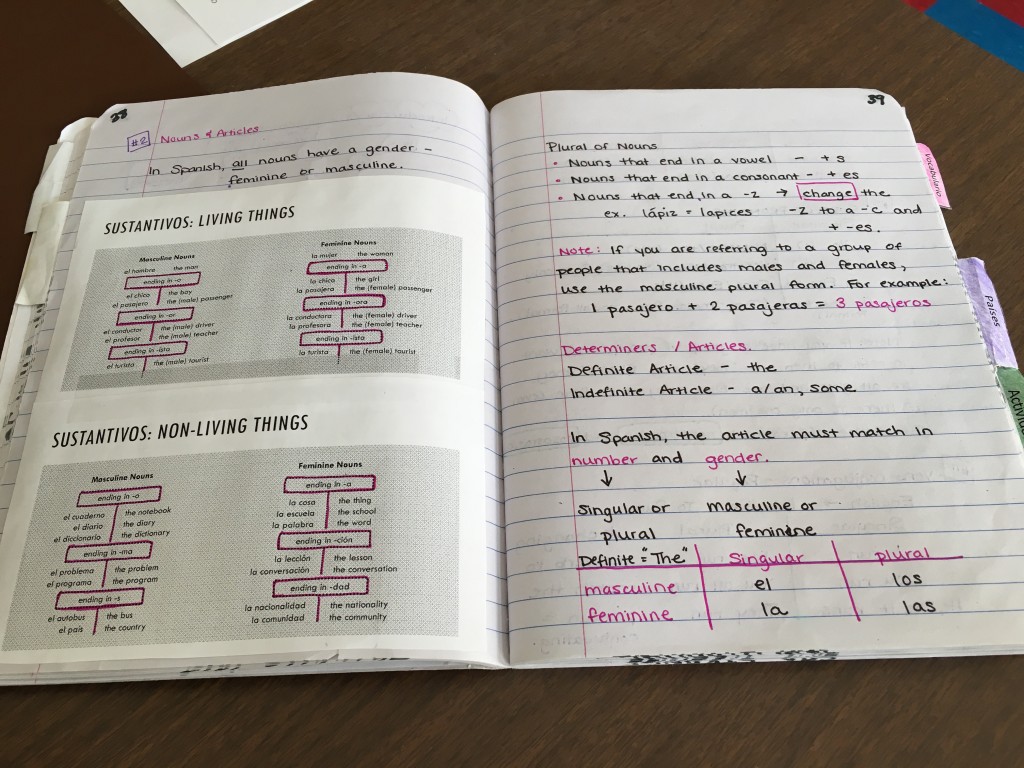
Paises, which means countries, is where we study our Spanish-speaking countries in more detail. This is probably the most fun section of the notebook. Part of our curriculum in middle school is to familiarize students with the Spanish-speaking countries so we highlight one a week (there are a few weeks with two because there are 22 countries and 18 weeks in a semester). On Monday, or the first day that they have my class each week, students know to pick up a blank info sheet for the featured country from the back table. Students trim the edges and glue it into their notebook under the Paises section. Throughout the week we fill out the information as we learn about the featured country. I do grade these notebooks so students are required to have a country completed by the Friday of the week after the country was studied. The very first page in this section is a Central-South America map where they color code each country so they can easily find every country in relation to the others. Info pages follow this page throughout the section. There are exactly enough pages in this section to accommodate the sheets that need to be recorded here. I let students know how precise this is so that they are not tempted to rip out pages for other activities.
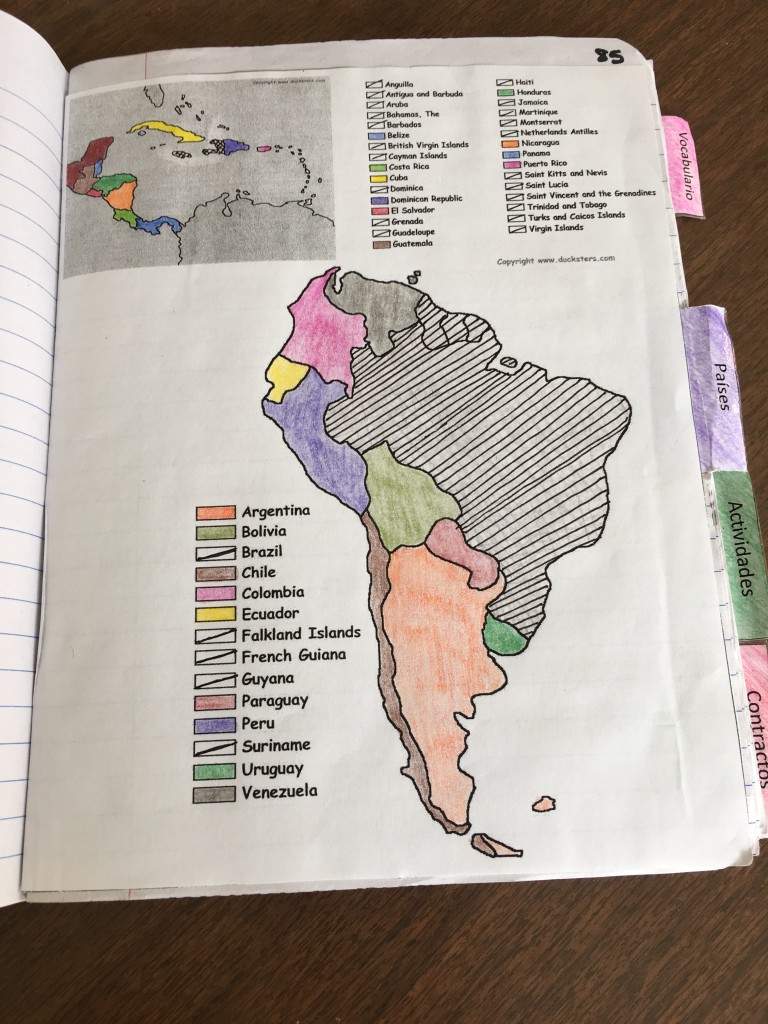
Actividades is where students glue activity sheets or the occasional worksheet that we complete. Sometimes students will be grouped and have to answer questions or translate some sentences. These are also recorded in this section.
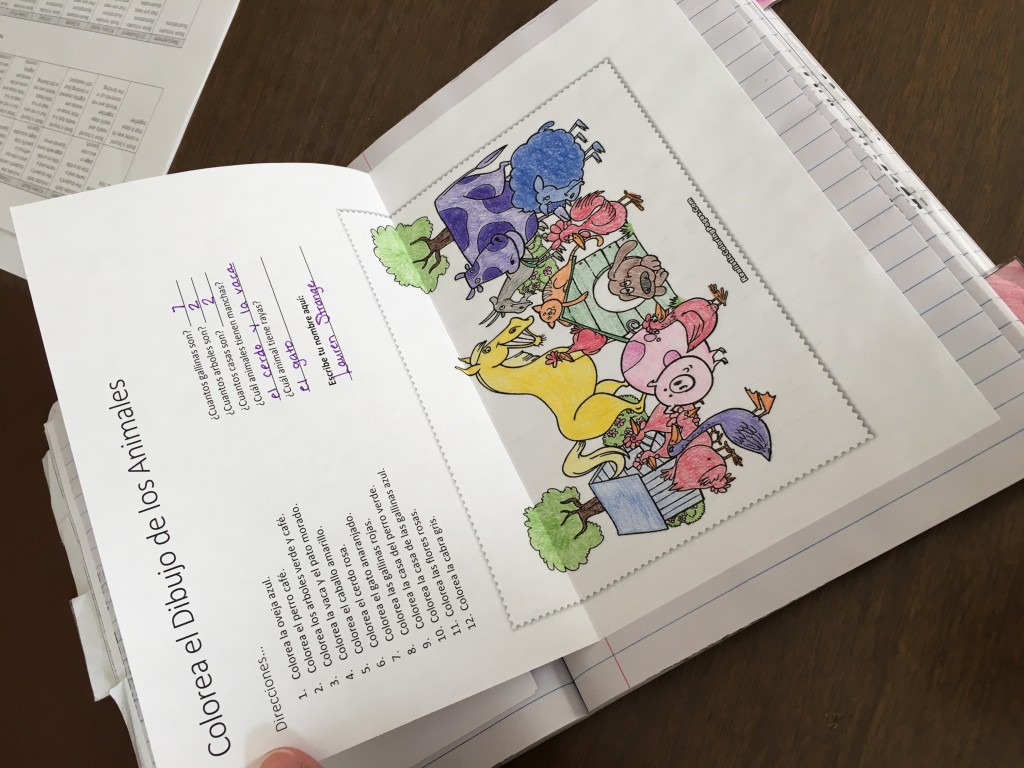
I got the idea for Contractos from my younger brother’s Spelling Contracts that they complete in elementary school. Spelling Contracts are ways that students practice their spelling words each week but in a format that is much more inviting than just writing the words 5-10 times each like we did when I was in elementary school. The Contract has a set number of points that students are required to reach then has generally nine 5 point activities and three 10 point activities from which to choose. Students choose the activities they would like to complete for practice, color in the box to indicate their choice, and attach the activity sheets to the back. To minimize on things being turned into me loose, I decided to incorporate this section into the notebooks. I assign Contractos bi-weekly. Students know to pick up a new contracto sheet from the back table when they pick up the week’s country info sheet, they trim the edges and glue it into their notebook and complete it on their own time, although they often have plenty of opportunity to work on these in class as they finish other activities early. It is due every other Friday. Students are required to include the proof of activity in their notebook. Some students choose to record it on the pages following the contracto and others decide to do it on other sheets of paper that they either glue or staple into their notebooks afterward. I require that students earn 25 points during each 2 week period.
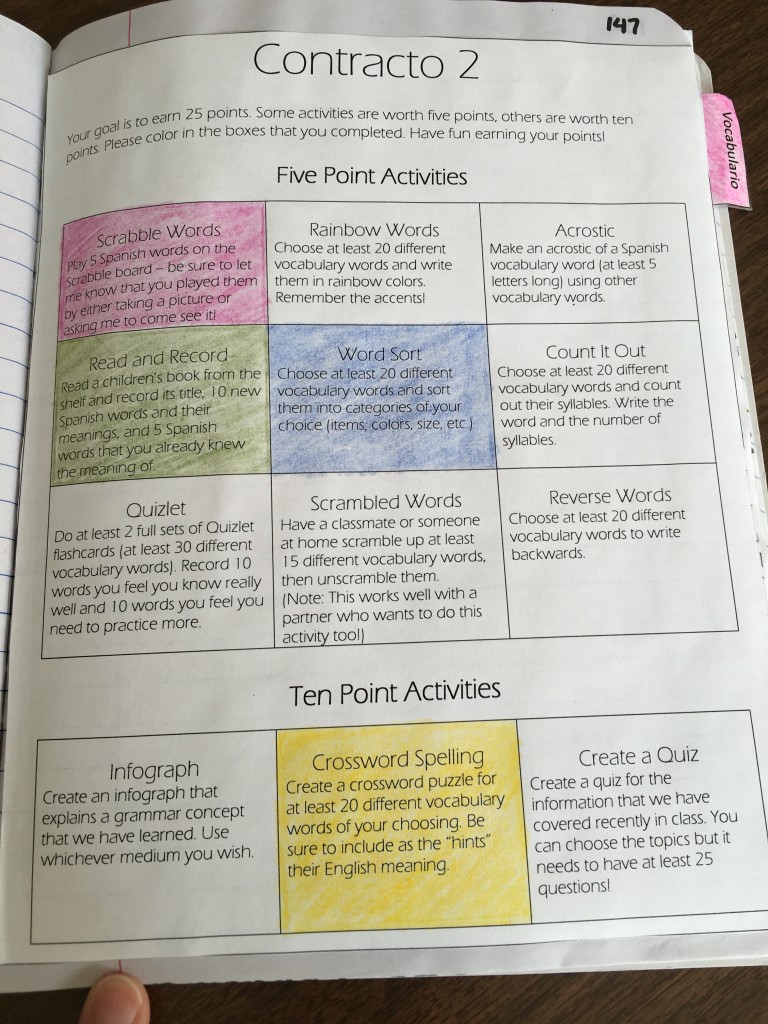
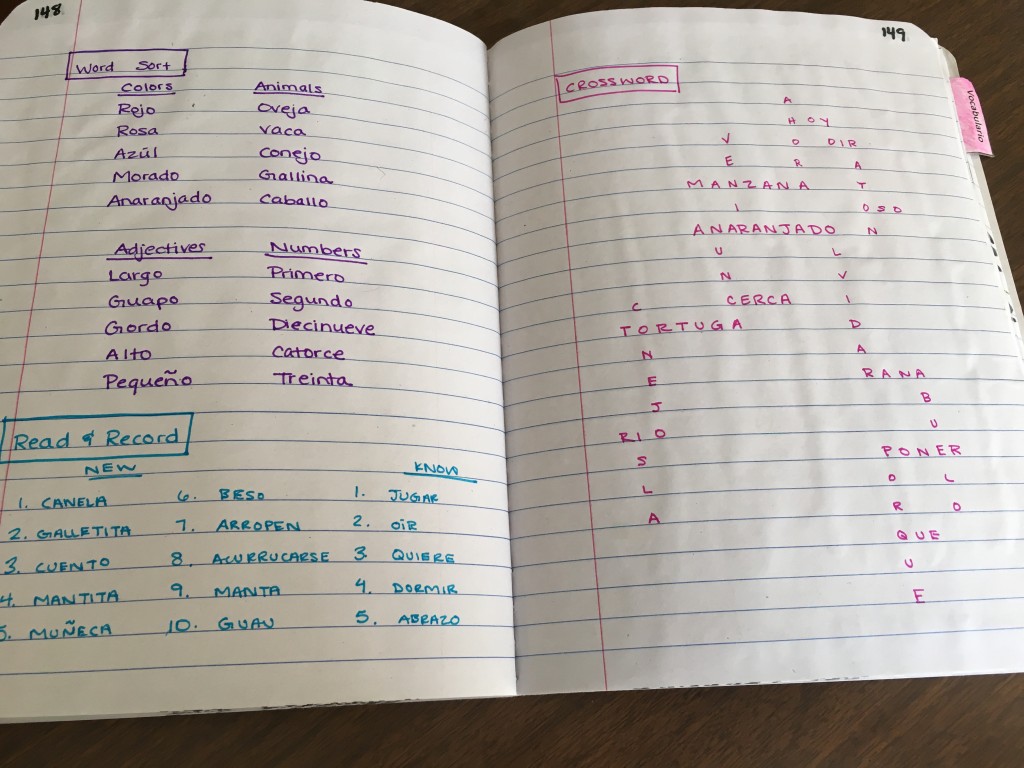
The final section is Vocabulario, which I went into greater detail about setting up in the previous post, and is a really important part of the notebooks for the foreign language classroom. I originally did not include this section but after only a week or two had students add it to their books and the class proceeded with new ease and more words learned! Any time we come across a new word in class I have students record it in this section of their books alphabetically so it can be found easily in the future. This is also very helpful for them when they need words to use for their contractos! Since the very first day of class we have been doing Spanish translations, getting steadily more complex with each passing lesson. I only have them record words that I know are high frequency or very important for some other reason. Since we have done this, students have learned many words in the first semester of Spanish 1 that several students don’t typically grasp until Spanish 2 or 3. This also keeps them from having to study words traditionally with flashcards all the time. I can focus on having them learn verbs and a few other words the traditional way and have them learn high frequency words through this tool. When we do group translations we will often come across a word that they have written down previously but do not know. Instead of telling them, I say, “This one is in your book,” and have them search for it themselves. After a few times of doing this they generally have the word memorized.
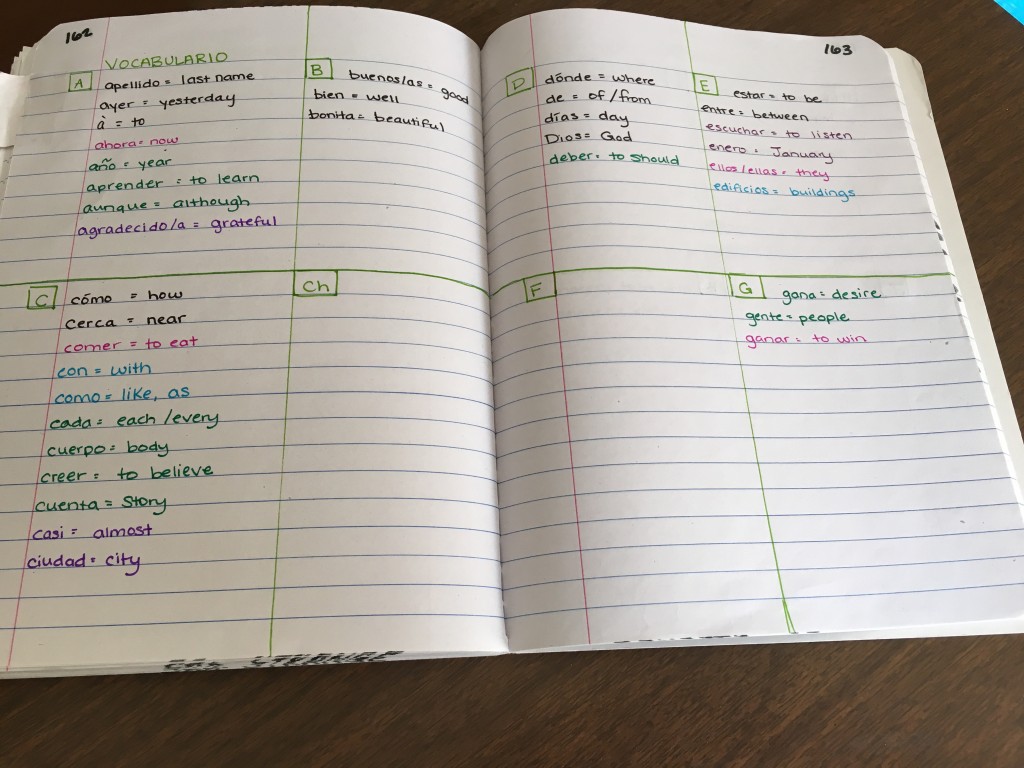
Our middle school Spanish class is only one semester long and is an intro course. I really must credit the interactive journal to much of the success of the students, especially the translations (which are a part of our country emphasis) and the vocabulario section. It is now the 15th week of school and students can translate as a group paragraphs that I have borrowed from college text books. Learning through encountering words instead of just memorizing them makes a huge difference! I would love to hear from any of you who have further resources that have aided in your students’ language acquisition!

